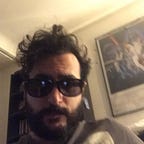WHAT HAPPENED TO DISNEY’S VILLAINS?
The Disney Twist
If you are anything like me you probably grew up on a healthy dose of Disney’s classic stories, movies like Snow White and the Seven Dwarfs, Pinocchio, Cinderella, Alice in Wonderland, Peter Pan, and Sleeping Beauty cemented in you what a children’s tale should be. They told us kids all we needed to know about heroes, villains, princes, princesses, and everything in between. Good times.
From the start of the legendary studio and until the end of what is commonly know has the Disney Renaissance, Disney told clear-cut stories. By this I mean you knew who the hero and the villain of the tale were since the start of the film.
And this is proper storytelling technique. Why? Because Disney’s writers knew that protagonists need obstacles, and the bigger and scarier the obstacle, the better the film. That’s why Disney has such iconic villains; they are the personification of the story’s obstacle. Great Villain = great story.
Let’s quickly go over some of Disney’s most iconic villains: Maleficent, The Evil Queen, Cruella De Vil, Ursula, Captain Hook, Jafar, Hades, Scar, Queen of Hearts, Gaston, and there are many many more! All of them struct terror in the hearts of children everywhere who fret for their hero’s fate. These villains were terribly mean, and the heroes had to overcome considerable obstacles to defeat them!
And then something happened… have you noticed that Disney’s villains have almost disappeared since the late ‘90s? Maybe Disappeared is the wrong word; let’s say they have “changed.” At some point since the early 2000s, Disney stopped introducing their iconic villains in the first act of their films and to turn them into 3rd Act reveals.
And just like that, the classic Disney Villain turned into the predictable Disney Twist.
But to understand why this happened we need to know who started the twist villain fad, cue in PIXAR.
[WARNING: Brief history lesson ahead]
In the ’90s PIXAR entered the movie-making business, and if they wanted to survive in such a competitive market, they needed to distance themselves from their main rival at the time, the all-powerful Disney Animation Studio. To do so, they created children stories with different ingredients; mainly they stayed away from musicals and the straightforward villain vs. hero storylines, which proved to be a massive success for them.
Movies like Toy Story, A Bug’s Life, Toy Story 2, Monsters, Inc. or Finding Nemo became huge box-office hits as they all stayed away from the “Disney formula.” That being said, they realized they needed villains in some of their stories to rev up the conflict, but instead of doing the straightforward villain thing, they used the “hidden antagonist” trope. Toy Story 2 and Monsters, Inc being the first two movies to do so.
For better or worse, Disney quickly realized that PIXAR was becoming their biggest competitor, and in 2006 the house of the mouse bought the independent studio. But the psychological damage had been done, after ten years of Pixar’s dominance in the box-office and popular culture, Disney decided to stop doing things the way they knew how, and instead, they chose to turn their films into Pixar’s narrative style.
But what does this mean? It means that stories that would traditionally fit a well-crafted villain have been ret-conned into twist antagonist. And Disney has done this so consistently in his films that the “surprise” aspect of the twist has been completely lost.
Take Frozen, for example, a tale of two princesses in a faraway kingdom, the perfect set-up for classic Disney villain! But what did they do? Twist antagonist! In the last 15min of the movie, they reveal that Hans is the evil mastermind behind everything, but the twist is so late in the story it feels forced for the audience. In Toy Story 2, when Stinky Pete is showed to be the villain of the story, the movie still has more than 45min to go, turning the reveal into a great mid-point turn which spins the story on its head. Can we say the same thing about the Hans’ twist? Nope, we can’t.
From the top of my head, Disney-Pixar has pulled the 3rd act villain twist in Toy Story 3, Frozen, Big Hero 6, Wreck-It Ralph, Zootopia, Coco, and The Incredibles 2. All of the villains in these movies start out as secondary characters who are helping the protagonist achieve their goal until *gasp!* we realize they are the bad guys all along.
Is the 3rd Act Villain reveal necessarily bad? Not at all! But if it is used as the only structure to tell your stories, then it is being abused and missed used.
Disney made their name telling mythological and archetypical stories. PIXAR made their name by not being Disney, but now that Disney owns PIXAR, and they decided to tell stories their way… who will tell those mythical and archetypical stories children need and love?
I am entirely sure that sooner or later Disney will realize that their “twists” have become the expectation and that their mythic storytelling techniques are now more necessary now than ever. But until then, let’s make those mythical and archetypical stories ourselves!
PIXAR was born because the market was saturated with a specific form of storytelling, aren’t we living through something similar now?
Who wants to start an animation studio?
